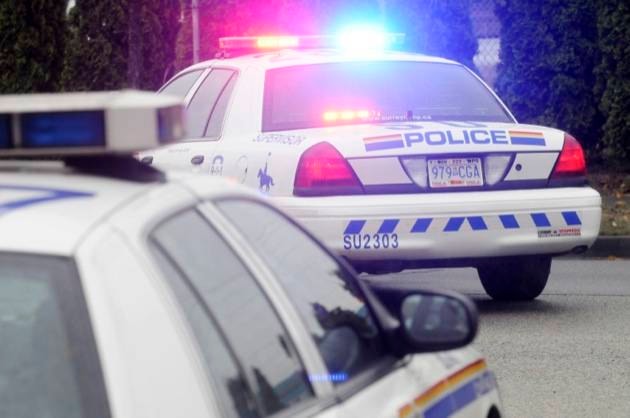For the second year in a row, Smithers (municipal) saw significant increases in its crime severity index (CSI), violent crime severity index (VCSI) and non-violent crime severity index (NVCSI).
Data released by Statistics Canada (StatCan) in late October (three months later than usual) indicate the CSI for 2019 was 165.26 compared to 138.41 in 2018, an 18.69 per cent bump.
Similarly, the VCSI was up 16.55 per cent from 164.38 to 191.59 and the NVCSI rose 19.65 per cent from 129.87 to 155.39.
While the numbers were up for Smithers, the town’s relative position among B.C. municipalities was down in all categories.
Of the 189 municipalities in British Columbia for which 2019 police-reported statistics are available, Smithers ranked 28th in CSI, 24th in VCSI and 27th in NVCSI, down from 23rd, 21st and 24th respectively.
New Hazelton ranked 25th with a CSI of 173.76 and Smithers (rural) — which includes Telkwa and Witset — ranked 114th at 71.11.
The Smithers municipal numbers buck a previous trend that saw steadily decreasing annual indices from 2014-2017’.
However, Smithers RCMP Staff Sgt. Terry Gillespie said he was expecting the increase this year because of a change in the UCR (uniform crime reporting) system.
StatCan eliminated the category of “unsubstantiated” incidents, he said, which means that these incidents that could not be either confirmed as having occurred or be cleared as “unfounded” are now reflected in the indices.
Gillespie said he would have been alarmed by the Smithers increases if they had been substantially higher than the provincial averages, but they were pretty much in line with an overal jump. Across the province, the CSI was up 17.31 per cent from 89.0 to 104.41, the VCSI 21.47 per cent from 75.31 to 91.48 and the NVCSI 16.1 per cent from 93.72 to 108.81.
He said he is very concerned, however, that the VCSI for Smithers typically runs double the provincial average.
To address this, he said he will be looking for additional resources noting the Smithers detachment has the lowest per capita police funding in the Northwest at $294 compared to next lowest Terrace at $317 and third lowest Kitimat at $322.
In 2018, Smithers saw a huge bump of more than 30 per cent in the CSI, which then-acting detachment commander Sgt. Darren Durnin attributed to dozens of complaints from the hospital about one extended-stay patient who was being abusive toward hospital staff.
READ MORE: Canada’s youngest dangerous offender from B.C. denied parole; to be reviewed in 2021
Smaller municipalities have always been skeptical of the meaningfulness of the crime severity indices noting that a single murder, for example, or a particularly troublesome hospital patient, can skew the numbers dramatically for a town of only 5,300 people and in any given year might not necessarily reflect the overall safety of the community.
Smithers mayor Gladys Atrill said as much in statement provided via email.
“While it is disappointing to see numbers rise, on balance Smithers is still a great community to live in,” she said. “Sometimes a spate of crime is committed by an individual or a group that will cause a spike in crime and that can dramatically push our numbers up. That said, any increase in crime is serious and Council meets regularly with the RCMP and supports their efforts to keep our community safe.”
StatCan acknowledges that taken discreetly, the numbers can be misleading, but nevertheless maintains they useful in tracking crime trends and the relative safety of communities.
“The Crime Severity Index is also a tool for measuring the increase or decrease in the severity of crime over time in any given jurisdiction, such as provinces and territories, and for comparing the seriousness of crime among jurisdictions,” an article on the StatCan website states.
“Over time, police-reported crime rates have generally been higher in the west and north than in eastern and central regions of the country. This is also true for crime severity, as measured by the new Crime Severity Index.”
Comparing Smithers to national and provincial data for the period 2015-2019, the town’s five-year average CSI of 131.60 is close to double the Canadian average of 71.22 and B.C.’s 75.56 average for the same period.
The Smithers average is also very close to Lethbridge, Alta.’s 2019 CSI of 141.79. Last year, Lethbridge once again ranked as Canada’s most dangerous census metropolitan area (CMA), or city with more than 100,000 population.
Quesnel ranked number one among municipalities in the province for the second year running with a CSI of 289.92, which was actually slightly down from 2018.
Quesnel also took top spot for NVCSI at 318.72, while Dease Lake had the highest VCSI in the province at 670.29.
The Top 10 among all reporting police jurisdictions in B.C. were: Quesnel, Williams Lake, Prince Rupert (rural), Fort St. James (rural), Duncan (rural), Dease Lake (rural), Prince George, Port Hardy (rural), Agassiz (rural) and Merritt.
Municipalities that fell out of the Top 10 from last year are Hope (rural), Alexis Creek, Hope (municipal), Terrace and Dawson Creek.
B.C.’s big cities, Kelowna, Vancouver, Abbotsford-Mission and Victoria ranked fouth, ninth, 11th and 17th respectively among Canada’s 37 CMAs.
The Top 5 CMAs in the country were: Lethbridge; Winnipeg, Man.; Regina, Sask.; Kelowna; and Saskatoon, Sask.
StatCan started tracking the crime severity indices as a better reflection of the relative safety of communities in 1998.
Nearly 40 per cent of police-reported crimes in Canada are theft under $5,000 and mischief. The calculation of the severity indices gives lesser weight to these types of crimes and more to violent and serious crimes.
StatCan has not clarified whether unsubstantiated incidents are weighted the same or less than similar substantiated crimes, Gillespie said.
editor@interior-news.com
Like us on Facebook and follow us on Twitter
